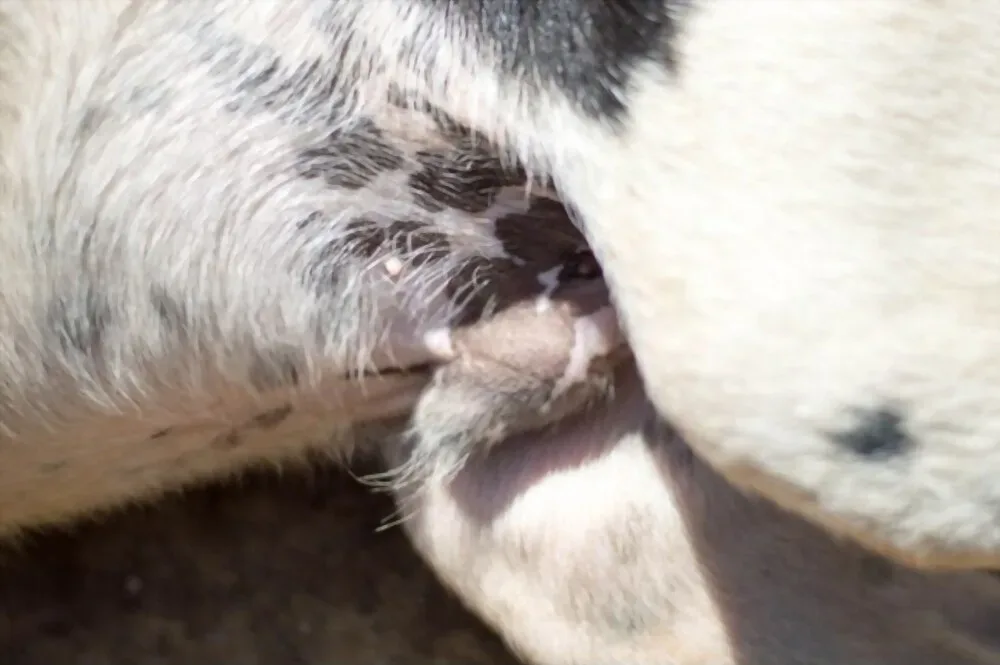As a devoted dog owner, nothing is more important than the health and well-being of our furry companions. So when I noticed my dog excessively licking his genital area, it naturally caused concern.
This behavior prompted me to take a closer look; leading to a discovery that many pet owners may not be familiar with—a thick, yellowish discharge known as dog smegma.
Smegma is a natural occurrence in dogs, both male and female. It’s a substance composed of skin oils, cells, and other fluids that serves to lubricate and protect their genital areas.
While it’s a common and typically harmless condition, excessive or malodorous smegma can sometimes indicate a health issue that requires attention.
Table of Contents
In this article, I’ll share the insights I’ve gained through my research and personal experience in managing this condition. From identifying what is normal to recognizing signs that warrant a vet visit, my goal is to provide fellow dog owners with the knowledge to effectively monitor and maintain their pet’s hygiene. By understanding more about dog smegma, we can ensure our pets stay comfortable and healthy.
The fundamental structure of a canine’s penis
The basic anatomy of a dog’s penis encompasses several structures, each playing a crucial role in reproductive and urinary functions. Among these anatomical features, one aspect that requires attention is the presence of a substance known as dog smegma. This topic delves into the anatomy of a dog’s penis, shedding light on the nature and significance of this substance.
The canine penis consists of several key components:
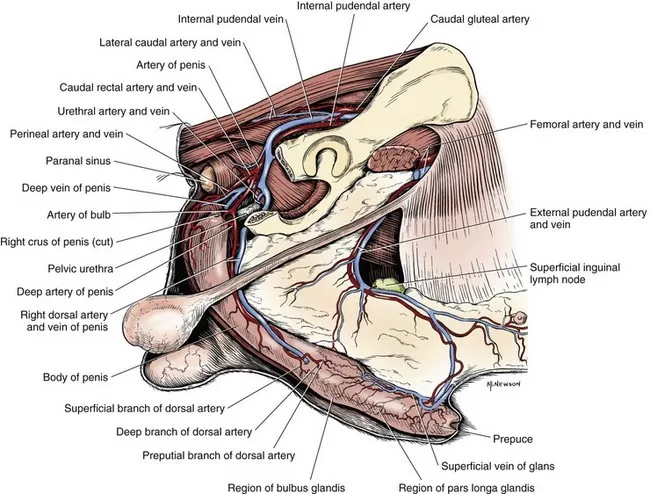
| Component | Description |
|---|---|
| Base and Root | Point of attachment to the dog’s body; root extends internally connecting to pelvic bones. |
| Body or Shaft | Extends outward from the body; contains blood vessels, erectile tissue, and specialized structures. |
| Glans Penis | Bulbous, sensitive tip with numerous nerve endings; vital for sensory stimulation during mating. |
| Preputial Sheath | Fold of skin covering the penis when flaccid; retracts during arousal or mating. |
| Os Penis (Baculum) | Bone is present in some breeds; aids in copulation; but not present in all dogs. |
| Urethra | Bone present in some breeds; aids in copulation; but not present in all dogs. |
In the context of the dog’s penis, the term “smegma” refers to a naturally occurring substance that can accumulate in the preputial sheath. Smegma consists of dead skin cells, oils, and other bodily secretions. Its presence is more commonly associated with intact (not neutered) male dogs due to the accumulation of these materials beneath the preputial sheath.
Let’s explore more on Dog smegma cleaning, treatment, and prevention methods.
What is Dog Smegma?
Dogs have an oily residue called smegma in their genital area, which is part of their natural anatomy. This creamy, semi-fluid concoction is typically a blend of desquamated epithelial cells and sebaceous gland secretions found within the prepuce.

Its hues range from white to yellow, sometimes even taking on a greenish tint, and it plays a crucial role in lubricating and safeguarding the delicate tissues of the penis and prepuce.
Smegma is a standard part of a dog’s physiology, but it’s not without complexity. Among the myriad of microorganisms it harbors, certain bacilli may mirror those seen in tuberculous sputum, posing a challenge for accurate identification.
Despite this, these bacilli aren’t necessarily bad; they’re often just one part of the body’s intricate immune defense, alongside leukocytes and phagocytes.
There’s a ritual dogs engage in that seems meticulous to pet owners: licking the preputial orifice. This behavior isn’t merely a quirk; it’s a self-maintenance measure to clear away accumulated smegma.
However, if this licking becomes excessive, it could be a sign of discomfort, potentially stemming from inflammation known as posthitis, balanitis, or balanoposthitis, where the internal lamina of the prepuce may exhibit enlarged, reddened lymph follicles.
It’s important to understand that smegma is a normal, but sometimes misunderstood part of your dog’s health. Changing its characteristics or getting a lot of buildup can be a sign of health problems.
Therefore, regular inspection and cleaning of your dog’s genital area are key to preempting any complications, ensuring their comfort and well-being.
Should there be any concerns about the volume or nature of the discharge, seeking a veterinarian’s expertise for a comprehensive examination is the prudent course of action.
Remember, while occasional licking can be a normal part of a young adult dog’s behavior, persistent and frequent actions leading to inflammation warrant professional attention.
Also Read: What neutralizes dog urine smell on concrete? Home-Made Odor Removing Technique.
Definition and composition of smegma
Chemically, smegma is a complex mixture primarily composed of sebum, which is secreted by the sebaceous glands, dead skin cells, sweat, and sometimes urine remnants. This combination results in a creamy substance that can sometimes have an unpleasant odor. It’s not sterile and includes various bacteria, typically harmless, such as E. coli.
Additionally, it contains immune cells and glycoproteins, which are proteins with sugar attached to them, playing a role in the immune system and lubrication.
The presence of these components serves important functions for the dog’s genital health, acting as a lubricant and protective barrier. However, it’s crucial for dog owners to monitor their pets for any changes in the quantity or quality of smegma, as these could indicate health issues that might require veterinary attention.
Differences between normal smegma and signs of infection
| Aspect | Normal Smegma | Signs of Infection |
|---|---|---|
| Color | White to light yellow | Green, brown, or red indicating infection or inflammation |
| Quantity | Small amounts, may not always be visible | Sudden or dramatic increase |
| Odor | Typically mild or none | Strong, unpleasant odor |
| Texture | Creamy and semi-fluid | May become thicker or change texture |
| Dog’s Behavior | Normal licking for cleaning | Excessive licking, which could suggest discomfort or pain |
| Associated Symptoms | None | Redness, swelling, pain, or presence of enlarged lymph follicles in the genital area |
What Causes Dog Smegma?
As a dog owner, you might have noticed your furry friend occasionally has a bit of a gooey discharge around their private parts. This is called smegma, and it’s pretty common in dogs. Let’s talk about what causes it and how it might show up in real-life scenarios:
- Allergies: Just like people, dogs can have allergies that irritate their skin, including the sensitive areas around their genitals. If your dog is allergic to something, you might see them licking more than usual, and this can lead to more smegma being produced. It’s like when they get a rash and can’t stop scratching, except it’s in a place they can only lick.
- Prostate Problems: If your male dog has issues with his prostate, which can happen especially as he gets older, it might cause more smegma to build up. You might notice him having trouble going to the bathroom or seeming a bit off, and when you check, there’s more of that gooey stuff than normal.
- Thrombocytopenia: This is a fancy word for when dogs don’t have enough platelets in their blood, which helps it clot. If your dog has this condition, they might bruise easily or have more smegma. It’s something you’d need a vet to diagnose, but you might first notice it because of the extra discharge.
- Bladder Issues: Dogs can get infections or other problems in their bladder, and this can lead to more smegma too. If your dog seems to be in pain when they pee, or you see blood in their urine, that’s a sign to get them checked out. The smegma might be your first clue that something’s wrong.
- Poor Hygiene: Just like humans, if dogs aren’t kept clean, they can get a buildup of oils and dead skin cells, which turns into smegma. If you’re not bathing your dog regularly or they’re getting dirty often, you might see more smegma.
- Hormonal Imbalances: Dogs have hormones that can affect their skin and oil production. If something’s off with their hormones, it could cause more smegma. This might be harder to spot, but if your dog’s behavior or body seems different, it could be a hormone thing.
- Skin Infections: If your dog gets a skin infection around their private parts, it can lead to more smegma as their body tries to fight off the infection. You might see redness or sores along with the discharge.
- Inflammation of the Genital Area: Sometimes the skin around a dog’s genitals can get inflamed, which leads to more smegma. This could be from them licking too much or from something irritating the skin.
- Obstruction of the Urinary Tract: If something’s blocking your dog’s urinary tract, like a stone, it can cause a buildup of smegma. You might notice your dog straining to pee or not peeing as much as usual.
In all these cases, the best thing to do is keep an eye on your dog and take them to the vet if you notice anything unusual. They can help figure out what’s causing the smegma and how to treat it. And remember, a little smegma is normal, but a lot can be a sign that your dog needs some help.
The role of smegma in canine health
Smegma is more than just a gooey substance found on dogs; it’s actually really important for their health. Here’s why:
- For Keeping Things Clean and Comfy: Smegma helps keep a dog’s private parts moist, which stops them from getting dry and itchy. It also cleans the area by getting rid of any dirt or germs that might cause infections.
- For Male Dogs and Mating: In boy dogs, smegma is super helpful when it comes to mating because it makes everything slippery, so things go smoothly. It also helps keep the sperm healthy by cleaning out anything that shouldn’t be there.
- To Stop Problems Down There: If there’s too much smegma or it’s not cleaned up, it can cause issues like swelling or sticking out of the skin, which can be really uncomfortable for the dog.
- For Female Dogs’ Health: Girl dogs also need smegma. It does the same cleaning job and helps keep the right balance of good and bad germs in their private area. When it’s time for them to have puppies, smegma helps make sure everything’s ready for mating and having healthy babies.
- What Dog Owners Should Do: It’s important for dog owners to clean their pets’ private areas regularly with gentle soap and water to keep smegma from building up too much. And if there seems to be a lot of it or if the dog seems bothered by it, it’s time to check in with the vet to make sure everything’s okay.
Natural Causes of Smegma Production
- Normal Body Function: Just like humans have natural body oils, dogs produce smegma as part of their normal bodily functions. It’s a mix of skin cells, oils, and moisture that helps keep their genital area lubricated.
- Age: Younger dogs, especially after reaching puberty, tend to produce more smegma. It’s a sign that their reproductive system is maturing.
- Breed Differences: Some breeds naturally produce more smegma than others, possibly due to their size and anatomy.
Factors That Can Increase Smegma Accumulation
Allergies: If your dog has allergies, they might lick their genital area more, which can lead to more smegma. It’s like when they get itchy skin from an allergy and can’t stop scratching.
- Poor Hygiene: Not cleaning your dog’s genital area regularly can lead to a buildup of smegma. It’s similar to how not showering for a while can make us feel grimy.
- Obesity: Overweight dogs may have more folds of skin, which can trap smegma and lead to increased accumulation.
- Humid Environments: Living in a damp or humid place can make smegma stick around longer and build up more.
- Health Issues: Certain medical conditions, like infections or prostate problems, can cause more smegma to be produced.
From my own experience, I’ve noticed that regular grooming and keeping an eye on my dog’s health can manage smegma levels. If I see any sudden changes, like a lot more smegma than usual or a bad smell, I know it’s time to visit the vet. It’s all about maintaining a balance and knowing what’s normal for your furry friend.
Dog Smegma Treatment
If you’re a dog owner, you know how vital it is to maintain your pet’s hygiene. One common issue that can arise is dog smegma, which is a buildup of discharge in the prepuce area. While it is not a severe medical issue, untreated smegma can cause discomfort and irritation for your furry friend.
It’s essential to take appropriate measures to manage and eliminate smegma to ensure your dog’s well-being. This section covers the step-by-step process, as recommended by veterinarians, for dog smegma treatment.
Read on to learn more about the best practices for managing and treating dog smegma effectively.
In most cases, smegma does not require treatment. However, if your dog is constantly licking his genitals or has a heavy discharge, you should have him tested by your vet, who will do the following:
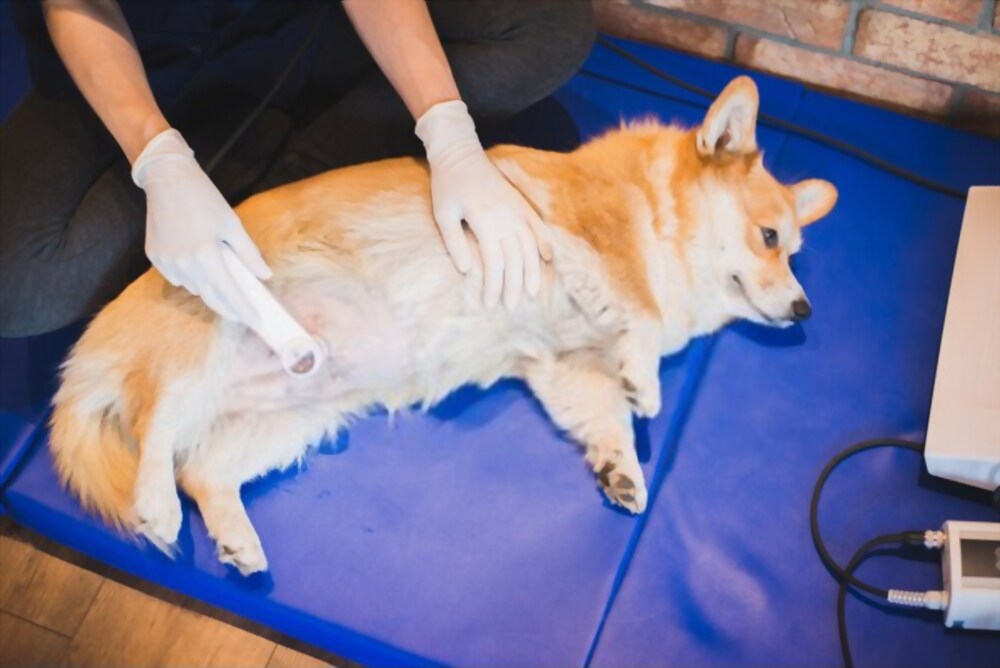
- Get a complete physical exam, including a thorough examination of your dog’s genitals.
- Perform screening tests, including a complete blood count, to determine if there is an infection or inflammation.
- Take a discharge sample for cytology (cell) and bacterial culture.
- The vet would examine the x-rays of your dog’s abdomen to see if there are any prostate abnormalities.
- Do an ultrasound to examine your dog’s abdomen more thoroughly.
How to Clean Dog Smegma by Yourself
Please note that observation and cleanliness is a key things before cleaning the dog smegma.
This is basically an accumulation of bad things around his penis and generally, a healthy dog that takes timely baths and maintains hygiene will have fewer chances of having these problems.
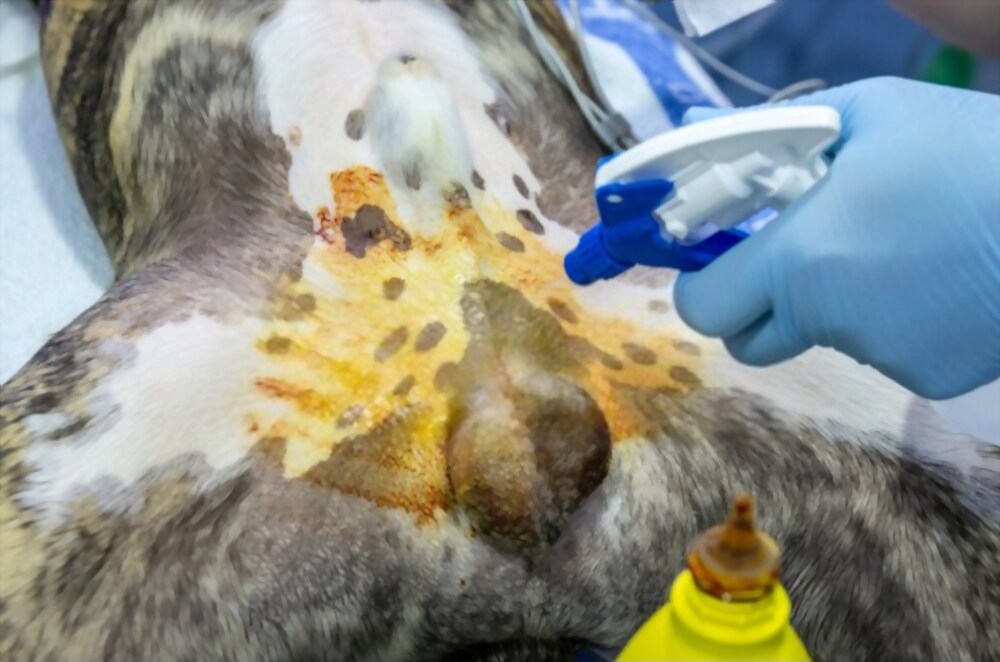
No special cleaning methods were discovered here but; here are some things you can do to clean your dog’s sensitive parts.
Step-by-step guide on cleaning your dog’s genital area:
- Prepare your dog: Gently calm your dog and place them in a comfortable position to start the cleaning process.
- Wear gloves: Always wear gloves to maintain hygiene and prevent any contamination.
- Use warm water: Soak a soft cloth in warm water and wring out the excess.
- Gently wipe: Carefully lift your dog’s tail and gently wipe away any visible smegma from the genital area.
- Use dog-friendly wipes: For a more thorough clean, use pet-safe wipes to remove any remaining residue.
- Dry the area: Pat the area dry with a clean towel to prevent moisture buildup, which can lead to irritation.
Recommended products for safe cleaning:
- Pet-safe wipes: Look for wipes specifically designed for dogs that are free of harmful chemicals and fragrances.
- Mild pet cleanser: A gentle cleanser can help remove smegma without irritating your dog’s skin.
- Soft cloths: Use soft, non-abrasive cloths to avoid scratching the sensitive genital area.
Tips for preventing excessive buildup of smegma:
- Regular checks: Regularly inspect your dog’s genital area to catch any buildup early.
- Proper diet: A balanced diet can help maintain your dog’s overall health and reduce smegma production.
- Routine grooming: Regular grooming sessions can help you keep an eye on your dog’s hygiene and address any issues promptly.
- Veterinary advice: If you notice an excessive amount of smegma or any signs of infection, consult your veterinarian for advice.
How to Clean Dog Smegma off Furniture?
If you follow regular smegma cleaning of your dog’s genitals, you will not need to scrub your furniture. However, if it happens accidentally, we cannot blame the dog for it.
We recommend that you use an enzyme-based cleaner you bought in the store to remove the stain. All you have to do is spray the stain with a cleaner and then scrub it with a microfiber towel.
It is important that the spray is enzyme-based so that it removes stains as well as odors from the smegma.
If you can not get an enzyme-based cleaner, you can also make your own home remedy to Clean Dog Smegma off Furniture.
To make this, prepare a solution of 1 part vinegar and 2 parts water.
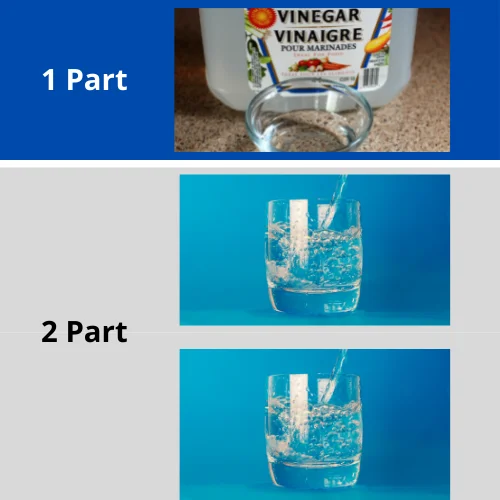
Mix the solution, and then spray to the area where the smegma is.
Now that you know how to clean dog smegma from furniture and no need to worry about your furniture again anymore.
Preventative Measures and Best Practices
Daily routines to minimize smegma buildup:
- Morning inspection: Each morning, I make it a habit to quickly check my dog’s genital area for any signs of smegma.
- Post-elimination clean-up: After my dog does his business, I use a damp cloth to wipe around the genital area, preventing any waste from contributing to smegma buildup.
- Evening wipe-down: Before bedtime, a gentle cleaning with pet-safe wipes helps ensure my dog stays fresh overnight.
Diet and nutrition’s impact on smegma production:
- High-quality diet: Feeding my dog a high-quality diet rich in essential nutrients helps maintain his overall health, which can influence smegma production.
- Hydration: Ensuring my dog drinks plenty of water throughout the day aids in flushing out toxins that could contribute to smegma.
- Supplements: Sometimes, based on my vet’s recommendation, I include supplements like omega fatty acids to support skin and coat health.
Regular grooming and health checks:
- Weekly baths: A weekly bath with a mild dog shampoo helps keep my dog’s coat and skin clean, reducing the chances of smegma buildup.
- Professional grooming: Every few months, a professional groomer gives my dog a thorough cleaning, including the genital area.
- Routine vet visits: Bi-annual vet check-ups help catch any health issues early, including those that might affect smegma production.
Implementing these practices has made a noticeable difference in my dog’s hygiene and has helped prevent excessive smegma buildup. It’s important to remember that each dog is unique, and what works for one may not work for another. Always consult with your vet to tailor the best care routine for your pet.
Conclusion
In this article, we’ve explored the importance of maintaining our canine companions’ hygiene, with a focus on managing smegma. We’ve walked through a step-by-step guide for cleaning your dog’s genital area, discussed recommended products for safe cleaning, and shared tips to prevent excessive buildup.
As we conclude, I want to emphasize the significance of responsible pet ownership. It’s a commitment that goes beyond love and companionship; it involves understanding and tending to the health and well-being of our loyal friends. Regular hygiene maintenance, a balanced diet, and consistent grooming are not just routines; they’re expressions of our care and responsibility towards our pets.
I encourage all dog owners to maintain these practices diligently. However, remember that each dog is an individual with unique needs. Therefore, a call-to-action for all readers is to seek personalized advice from a veterinarian. They can provide tailored guidance that aligns with your dog’s specific health requirements.
Let’s strive to be the best pet parents we can be, ensuring our dogs live happy, healthy, and clean lives.

